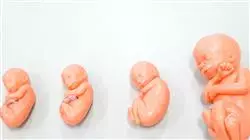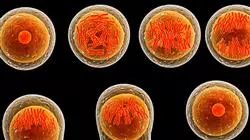University certificate
The world's largest faculty of nursing”
Introduction to the Program
Acquire the necessary skills and competencies to work in nursing in the best Assisted Reproduction Units with a highly intensive academic Masters Degree”

This Masters Degree will take the student through several key aspects: anatomy of human reproduction, neuroendocrinology of reproduction, ovogenesis and spermatogenesis and other fundamental aspects.
Throughout the Masters Degree, the approach to the study of infertility in women will start from the basics. By means of the clinical history, the nursing student will begin by identifying the most important factors involved and will learn about the most relevant and frequent pathologies that affect women with infertility. Special emphasis will be placed on all those basic tests necessary for the initiation and continuation of treatment, finding out the fundamental role of the nursing service: assistance, management and education.
In addition, we will study the different techniques performed in the AR Laboratory, aimed at achieving pregnancy in patients with fertility problems both female and male, the characteristics of the surgical area and the work in it and the intervention of the nursing staff in preoperative, intraoperative and postoperative moments.
The final part of the Masters Degree will qualify students in the transcendental legal field of assisted reproduction, which will provide students with the ability to resolve multiple legal issues, both in questions related to legality, in the uses and limits of assisted reproduction techniques, as well as in any doubts about the use and approach of informed consents.
And of course, this very complete Masters Degree will place special emphasis on the need for collaborative and close work in Assisted Reproduction with the coordinated intervention of the areas of medicine, nursing and embryology.
With this Masters Degree, you will be able to combine high-intensity education with your personal and professional life, achieving your goals in a simple and real way”
This Masters Degree in Assisted Reproductive Nursing offers the characteristics of a course of high scientific, teaching and technological level. These are some of its most notable features:
- The latest technology in online teaching software
- A highly visual teaching system, supported by graphic and schematic contents that are easy to assimilate and understand
- Practical cases presented by practising experts
- State-of-the-art interactive video systems
- Teaching supported by telepractice
- Continuous updating and recycling systems
- Autonomous learning: full compatibility with other occupations
- Practical exercises for self-evaluation and learning verification
- Support groups and educational synergies: questions to the expert, debate and knowledge forums
- Communication with the teacher and individual reflection work
- Content that is accessible from any fixed or portable device with an Internet connection
- Supplementary documentation databases are permanently available, even after the program
A Masters Degree that will enable you to work in the field of Assisted Reproduction Nursing, with the solvency of a high-level professional”
Our teaching staff is made up of professionals from different fields related to this specialty. In this way, TECH ensures that it delivers the targeted capacitive update it intends. A multidisciplinary team of professionals trained and experienced in different environments, who will cover the theoretical knowledge in an efficient way, but, above all, will put the practical knowledge derived from their own experience: one of the differential qualities of this course.
This mastery of the subject is complemented by the effectiveness of the methodological design of this Masters Degree in Assisted Reproductive Nursing. Developed by a multidisciplinary team of experts, it integrates the latest advances in educational technology. In this way, you will be able to study with a range of comfortable and versatile multimedia tools that will give you the operability you need in your education.
The design of this program is based on Problem-Based Learning: an approach that conceives learning as an eminently practical process. To achieve this remotely, we will use telepractice: With the help of an innovative interactive video system, and Learning from an Expert you will be able to acquire the knowledge as if you were actually dealing with the scenario you are learning about. A concept that will allow you to integrate and fix learning in a more realistic and permanent way.
A program created and directed by professional experts in Assisted Reproduction that make this Masters Degree a unique opportunity for professional growth"

The learning in this Masters Degree is developed through the most performed didactic methods in online teaching to guarantee that your efforts produce the best results possible"
Why study at TECH?
TECH is the world’s largest online university. With an impressive catalog of more than 14,000 university programs available in 11 languages, it is positioned as a leader in employability, with a 99% job placement rate. In addition, it relies on an enormous faculty of more than 6,000 professors of the highest international renown.

Study at the world's largest online university and guarantee your professional success. The future starts at TECH”
The world’s best online university according to FORBES
The prestigious Forbes magazine, specialized in business and finance, has highlighted TECH as “the world's best online university” This is what they have recently stated in an article in their digital edition in which they echo the success story of this institution, “thanks to the academic offer it provides, the selection of its teaching staff, and an innovative learning method aimed at educating the professionals of the future”
A revolutionary study method, a cutting-edge faculty and a practical focus: the key to TECH's success.
The most complete study plans on the university scene
TECH offers the most complete study plans on the university scene, with syllabuses that cover fundamental concepts and, at the same time, the main scientific advances in their specific scientific areas. In addition, these programs are continuously being updated to guarantee students the academic vanguard and the most in-demand professional skills. In this way, the university's qualifications provide its graduates with a significant advantage to propel their careers to success.
TECH offers the most comprehensive and intensive study plans on the current university scene.
A world-class teaching staff
TECH's teaching staff is made up of more than 6,000 professors with the highest international recognition. Professors, researchers and top executives of multinational companies, including Isaiah Covington, performance coach of the Boston Celtics; Magda Romanska, principal investigator at Harvard MetaLAB; Ignacio Wistumba, chairman of the department of translational molecular pathology at MD Anderson Cancer Center; and D.W. Pine, creative director of TIME magazine, among others.
Internationally renowned experts, specialized in different branches of Health, Technology, Communication and Business, form part of the TECH faculty.
A unique learning method
TECH is the first university to use Relearning in all its programs. It is the best online learning methodology, accredited with international teaching quality certifications, provided by prestigious educational agencies. In addition, this disruptive educational model is complemented with the “Case Method”, thereby setting up a unique online teaching strategy. Innovative teaching resources are also implemented, including detailed videos, infographics and interactive summaries.
TECH combines Relearning and the Case Method in all its university programs to guarantee excellent theoretical and practical learning, studying whenever and wherever you want.
The world's largest online university
TECH is the world’s largest online university. We are the largest educational institution, with the best and widest online educational catalog, one hundred percent online and covering the vast majority of areas of knowledge. We offer a large selection of our own degrees and accredited online undergraduate and postgraduate degrees. In total, more than 14,000 university degrees, in eleven different languages, make us the largest educational largest in the world.
TECH has the world's most extensive catalog of academic and official programs, available in more than 11 languages.
Google Premier Partner
The American technology giant has awarded TECH the Google Google Premier Partner badge. This award, which is only available to 3% of the world's companies, highlights the efficient, flexible and tailored experience that this university provides to students. The recognition as a Google Premier Partner not only accredits the maximum rigor, performance and investment in TECH's digital infrastructures, but also places this university as one of the world's leading technology companies.
Google has positioned TECH in the top 3% of the world's most important technology companies by awarding it its Google Premier Partner badge.
The official online university of the NBA
TECH is the official online university of the NBA. Thanks to our agreement with the biggest league in basketball, we offer our students exclusive university programs, as well as a wide variety of educational resources focused on the business of the league and other areas of the sports industry. Each program is made up of a uniquely designed syllabus and features exceptional guest hosts: professionals with a distinguished sports background who will offer their expertise on the most relevant topics.
TECH has been selected by the NBA, the world's top basketball league, as its official online university.
The top-rated university by its students
Students have positioned TECH as the world's top-rated university on the main review websites, with a highest rating of 4.9 out of 5, obtained from more than 1,000 reviews. These results consolidate TECH as the benchmark university institution at an international level, reflecting the excellence and positive impact of its educational model.” reflecting the excellence and positive impact of its educational model.”
TECH is the world’s top-rated university by its students.
Leaders in employability
TECH has managed to become the leading university in employability. 99% of its students obtain jobs in the academic field they have studied, within one year of completing any of the university's programs. A similar number achieve immediate career enhancement. All this thanks to a study methodology that bases its effectiveness on the acquisition of practical skills, which are absolutely necessary for professional development.
99% of TECH graduates find a job within a year of completing their studies.
Master's Degree in Nursing in the Assisted Reproductive Service
It was a British nurse named Jean Marian Purdy who laid the foundations of what would become artificial fertilization by transferring a laboratory-grown embryo into a mother's uterus. This revolutionary "test-tube baby" experiment is now the salvation for many people with infertility problems. The remarkable scientific and technological advances in this field make it necessary to update our knowledge. For this reason, TECH, a world leader in higher distance education, presents the Master's Degree in Nursing in Assisted Reproduction Services. A postgraduate course that will be extremely enriching for those who wish to broaden their work horizons, as well as enter a field of great demand within the clinical-hospital sector and that encompasses fascinating aspects such as: embryonic development, steroid hormones, ovogenesis, spermatogenesis, genetics, endocrinology, among several others. All these concepts you will see in detail throughout the 1500 hours that this postgraduate course lasts in a completely online format where you will find unique multimedia material and innovative learning methodologies.
Study a Master's Degree in Assisted Reproduction online
About 8% of the world's population suffers from some fertility problem. In areas such as Latin America, that number rises to between 12 and 20%. On the other hand, a study entitled Global Burden of Disease published by the scientific journal Lancet in 2019, indicates that, despite the demographic increase, the fertility rate per couple seems to be gradually decreasing. These data are neither transient nor can they be left aside in the face of the growing possibilities available to medical science. Assisted reproduction is the answer to these challenges and now, you can give a beneficial twist to your Nursing career by accessing our Master's Degree. Through ten modules we will instruct you not only in the different techniques of this reproductive alternative (artificial insemination, in vitro fertilization, embryo transfer), but also in other surgical, pharmacological and pathological aspects associated with the specialty. Are you looking for a professional career with the best? Opt for our self-regulated classes with expert professors and make an enrollment change your future.







